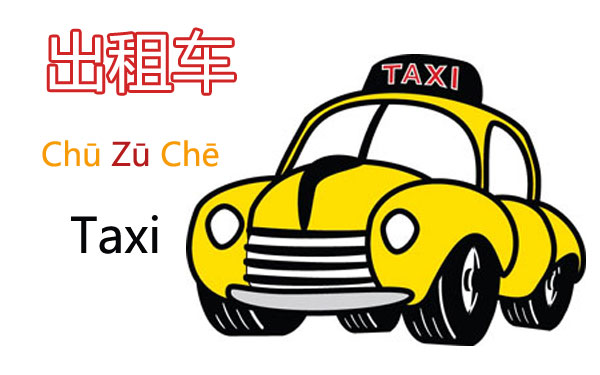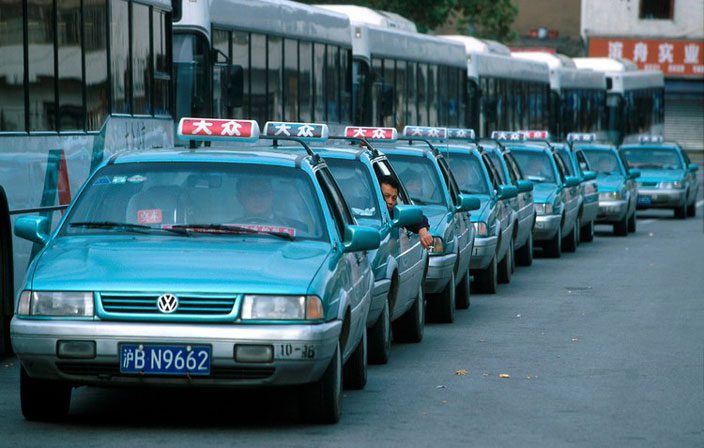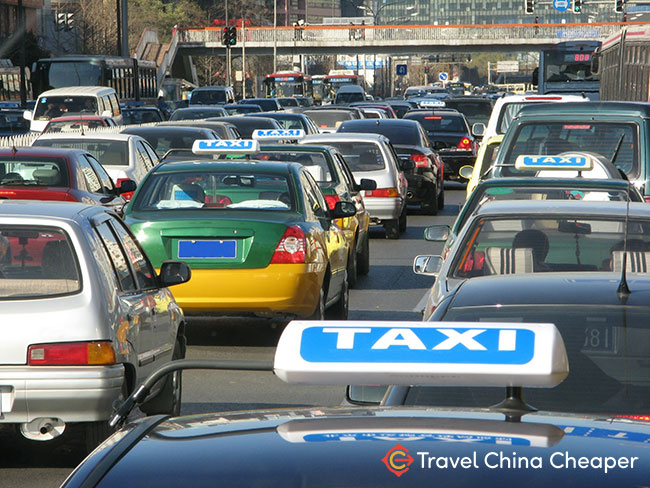A Must Have Guide to Learn Taxi Chinese
Navigating China’s bustling streets can be daunting, especially when language barriers stand between you and your destination. A Must-Have Guide to Learn Taxi Chinese is your essential companion for mastering the key phrases and vocabulary needed to communicate confidently with taxi drivers. Whether you're hailing a cab, giving directions, or negotiating fares, this guide simplifies everyday interactions with clear, practical examples. From basic greetings to handling unexpected situations, you’ll learn the language essentials that ensure smooth and stress-free rides. Perfect for travelers and expats alike, this guide transforms chaotic commutes into seamless journeys, helping you explore China with ease and confidence.
A Must Have Guide to Learn Taxi Chinese: Essential Phrases and Tips
1. Basic Taxi Chinese Phrases Every Traveler Should Know
When taking a taxi in China, knowing a few basic phrases can make your ride smoother. Here are some essential expressions to communicate with drivers:
| English | Chinese (Pinyin) |
|---|---|
| Where to? | Qù nǎlǐ? |
| Please take me to... | Qǐng dài wǒ qù... |
| How much is the fare? | Duōshǎo qián? |
| Stop here, please | Qǐng zài zhèlǐ tíng |
| Turn left/right | Xiàng zuǒ/yòu guǎi |
2. Understanding Taxi Fare and Payment Methods
Taxi fares in China vary by city, but most use meters. Knowing payment options helps avoid confusion:
See AlsoHow To Use WeChat - 5 Top Tips To Know| Payment Method | Key Notes |
|---|---|
| Cash | Always carry small bills |
| WeChat Pay/Alipay | Most drivers prefer mobile payments |
| Credit Cards | Rarely accepted |
3. How to Hail a Taxi in China
Hailing a taxi in China can be tricky. Here’s how to successfully flag one down:
| Method | Tips |
|---|---|
| Street Hailing | Look for vacant taxis (green light on roof) |
| Ride-Hailing Apps | Use Didi Chuxing (China's Uber) |
| Taxi Stands | Common near hotels and malls |
4. Common Challenges and How to Overcome Them
Travelers often face language barriers or route issues. Here’s how to handle them:
| Challenge | Solution |
|---|---|
| Driver doesn’t understand | Show your destination in Chinese characters |
| Long detours | Use GPS apps to track the route |
| Refusal of service | Try another taxi or use ride-hailing apps |
5. Safety Tips for Taking Taxis in China
Staying safe is crucial. Follow these precautions for a secure ride:
See AlsoLearning to read handwritten Chinese| Safety Measure | Why It Matters |
|---|---|
| Check the driver’s ID | Ensures licensed operator |
| Avoid unmarked cars | Prevents scams or risks |
| Share ride details | Keeps someone informed |
What is a taxi called in China?

What is the Common Term for Taxi in China?
In China, a taxi is most commonly referred to as 出租车 (chūzūchē) in Mandarin. This term is widely recognized across the country and is used in both spoken and written language. Here are some key details:
- Pronunciation: chūzūchē (chew-zoo-chuh).
- Literal Meaning: 出租 means for rent, and 车 means vehicle.
- Usage: Commonly seen on taxi signs and in transportation apps.
How Do You Hail a Taxi in China?
Hailing a taxi in China is straightforward, but there are a few things to keep in mind:
See AlsoChildren Learning Chinese (Is It Possible)?- Street Hailing: Raise your hand to signal an available taxi (with a green or red 空车 sign).
- Taxi Stands: Found near airports, hotels, and shopping centers.
- Ride-Hailing Apps: Apps like Didi are widely used for convenience.
Are There Different Types of Taxis in China?
Yes, China offers various taxi options depending on the city and service level:
- Standard Taxis: Metered and usually painted in city-specific colors (e.g., blue in Beijing).
- Luxury Taxis: Higher-end vehicles like Audi or Buick, often costing more.
- Electric Taxis: Increasingly common in cities like Shenzhen for eco-friendly travel.
What Are the Taxi Fare Rules in China?
Taxi fares in China vary by city but generally follow these rules:
- Base Fare: Starts around ¥10–¥13 (varies by city).
- Distance Rate: Approximately ¥2–¥3 per kilometer after the initial distance.
- Night Surcharge: Some cities charge 20–30% extra after 11 PM.
How Do You Communicate with Taxi Drivers in China?
Communicating with taxi drivers can be challenging if you don’t speak Mandarin:
- Use Address Cards: Carry your destination written in Chinese characters.
- Translation Apps: Apps like Google Translate or Pleco can help bridge the gap.
- Hotels & Landmarks: Mentioning well-known places often simplifies directions.
Is a taxi in China cheap?

How Much Does a Taxi Ride Cost in China?
The cost of a taxi ride in China varies depending on the city, distance, and time of day. Generally, fares are relatively affordable compared to Western countries. Here are some key points:
- Base fare typically ranges from ¥10 to ¥14 (approximately $1.40 to $2.00 USD) for the first 3 kilometers.
- Additional charges apply per kilometer, usually between ¥2 to ¥3 ($0.30 to $0.45 USD).
- Night rates (after 11 PM) may increase by 20-30% in some cities.
Are Taxis in China Cheaper Than Ride-Hailing Apps?
While traditional taxis are reasonably priced, ride-hailing apps like Didi Chuxing often offer competitive or lower rates. Consider the following:
- Ride-hailing discounts are common, especially for first-time users.
- Shared rides (carpooling options) can reduce costs significantly.
- Surge pricing during peak hours may make taxis a cheaper alternative.
Which Chinese Cities Have the Most Affordable Taxis?
Taxi prices differ across cities, with smaller cities generally being cheaper than metropolitan areas like Beijing or Shanghai. Examples include:
- Chengdu and Chongqing have lower base fares (around ¥8-¥10).
- Tier-2 cities like Xi'an or Hangzhou offer mid-range pricing.
- Shanghai and Beijing taxis are more expensive due to higher living costs.
What Factors Influence Taxi Prices in China?
Several elements affect the final taxi fare in China. Key factors include:
- Traffic conditions – longer waits increase metered fares.
- Fuel prices – fluctuations may lead to fare adjustments.
- Local regulations – some cities enforce fixed rates for certain routes.
How to Save Money on Taxis in China?
Travelers can minimize expenses by following these cost-saving tips:
- Use public transport for short distances instead of taxis.
- Negotiate flat rates for long trips outside city centers.
- Avoid peak hours to prevent surge pricing or traffic delays.
How do you get a taxi in Shanghai?

Hailing a Taxi on the Street
In Shanghai, you can easily hail a taxi by raising your hand on the street, especially near busy areas like shopping districts, hotels, or metro stations. Taxis are abundant, but avoid rush hours (7–9 AM and 5–7 PM) for quicker service. Look for available taxis with their rooftop light illuminated in green (indicating availability).
- Stand near the curb and raise your arm to signal the driver.
- Ensure the taxi’s light is green (red means occupied).
- Avoid hailing in no-stopping zones (marked with yellow lines).
Using Ride-Hailing Apps
Popular apps like Didi Chuxing (China’s Uber equivalent) or Meituan are widely used. Download the app, register with a local number, and link a payment method (Alipay/WeChat Pay). These apps offer English interfaces and real-time tracking.
- Download Didi Chuxing or Meituan from app stores.
- Set your pickup/drop-off locations using English or Chinese.
- Choose between standard taxis or private car services.
Taxi Stands at Transport Hubs
Major transport hubs like Pudong Airport, Hongqiao Airport, and train stations have designated taxi stands. Follow signs or queue lines. Staff may assist with directing passengers.
- Locate the official taxi queue (avoid unlicensed drivers).
- Prepare your destination address in Chinese characters for the driver.
- Expect metered fares; insist on using the meter if not activated.
Booking via Hotel or Restaurant
Many hotels and upscale restaurants offer taxi-booking services for guests. Staff can communicate your destination to the driver, avoiding language barriers.
- Request assistance from the concierge or reception.
- Provide the exact address or landmark in Chinese.
- Confirm if the hotel charges an extra service fee.
Recognizing Licensed Taxis
Shanghai’s licensed taxis are typically turquoise, gold, or blue with a company logo. Avoid unmarked cars or drivers offering flat rates (often scams).
- Check for a taxi license displayed on the dashboard.
- Verify the driver’s photo ID and meter.
- Use official receipts (issued automatically) for complaints or lost items.
Can I pay cash for a taxi in China?

Is Cash Accepted in Chinese Taxis?
Yes, cash is widely accepted for taxi payments in China, especially in cities where digital payments are not yet dominant. However, many drivers prefer mobile payments like Alipay or WeChat Pay. Here are key points:
- Cash remains valid, but carrying small bills is advisable for convenience.
- Some drivers may not carry change, so exact amounts are helpful.
- Rural areas are more likely to accept cash than urban centers.
How Common Are Cash Payments in China's Taxis?
While cash payments are still possible, their prevalence varies by location. Major cities increasingly favor digital transactions. Key observations:
- Urban taxis often expect mobile payments but accept cash if insisted.
- Smaller towns or rural taxis rely more on cash due to limited digital infrastructure.
- Tourist-heavy areas may accommodate cash but encourage alternatives.
What Are the Alternatives to Cash for Taxi Payments in China?
Beyond cash, several digital payment methods dominate China's taxi industry. The most common include:
- Alipay and WeChat Pay are the primary options for locals and tourists.
- Some taxis accept UnionPay cards, though this is less common.
- Ride-hailing apps like Didi Chuxing integrate digital wallets for seamless payments.
Do Taxi Drivers in China Prefer Cash or Digital Payments?
Most drivers favor digital payments for speed and security, but cash is still tolerated. Considerations:
- Convenience: Mobile payments eliminate the need for change.
- Safety: Digital transactions reduce cash-handling risks.
- Hygiene: Contactless payments gained popularity post-pandemic.
Tips for Tourists Using Cash in Chinese Taxis
If relying on cash, tourists should follow these guidelines for a smooth experience:
- Carry small denominations (e.g., ¥10, ¥20) to avoid change issues.
- Confirm the driver accepts cash before starting the ride.
- Keep a translation app handy to communicate payment preferences.
Frequently Asked Questions (FAQ)
What is included in A Must Have Guide to Learn Taxi Chinese?
A Must Have Guide to Learn Taxi Chinese is a comprehensive resource designed to help travelers and expats navigate taxi rides in China with ease. The guide includes essential phrases, vocabulary, and dialogues tailored for common taxi scenarios, such as giving directions, negotiating fares, and handling emergencies. Additionally, it provides cultural tips to avoid misunderstandings and ensure smooth communication with drivers. Whether you're a beginner or an intermediate learner, this guide equips you with the practical language skills needed for hassle-free travel.
Is this guide suitable for complete beginners in Chinese?
Absolutely! The guide is structured to accommodate complete beginners, featuring phonetic pronunciations (Pinyin) alongside Chinese characters to help learners speak confidently. It focuses on high-frequency phrases and simple sentence structures, making it accessible even if you have no prior knowledge of Mandarin. The guide also includes visual aids and mnemonics to reinforce learning, ensuring that beginners can quickly grasp and recall key expressions for taxi-related situations.
How can this guide help me avoid common taxi scams in China?
Taxi scams can be a concern for travelers, but this guide arms you with the language tools and cultural awareness to protect yourself. It teaches you how to confirm fares, recognize meter tampering, and insist on using official taxi services. The guide also includes emergency phrases to seek help if needed. By understanding local norms and communicating clearly, you can minimize risks and ensure a safe and fair taxi experience in China.
Can I use this guide for other transportation scenarios beyond taxis?
While the guide primarily focuses on taxi interactions, many of the phrases and vocabulary can be applied to other transportation scenarios, such as ride-hailing apps (Didi), buses, or subways. The foundational language skills—like asking for directions, stating destinations, and discussing prices—are transferable. Additionally, the guide’s cultural insights and practical tips will help you navigate various modes of transport in China more confidently, making it a versatile tool for travelers.
Leave a Reply

Related Posts